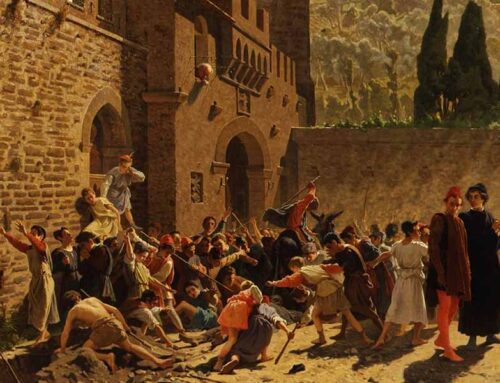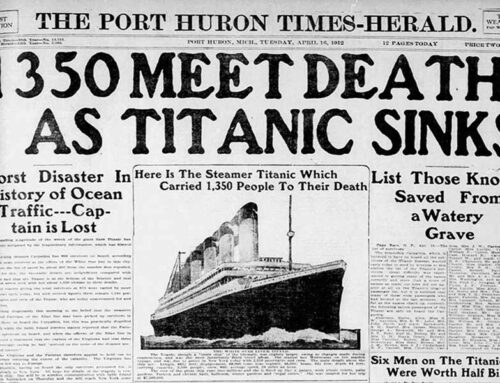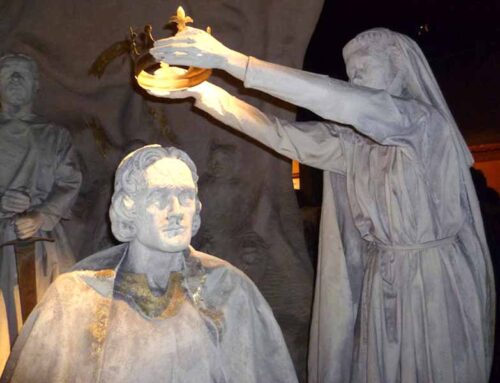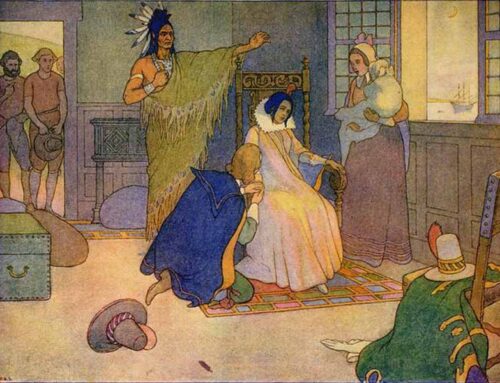
The Boston Massacre, March 5, 1770
 hen looking back at our nation’s road to independence, there were a number of inciting incidents considered to be formative in setting the tone for the manner in which such an unprecedented endeavor would proceed. A string of emotionally-charged battles for the loyalties and conscience of the colonies were engaged in, long before the war of bullets and bayonets.
hen looking back at our nation’s road to independence, there were a number of inciting incidents considered to be formative in setting the tone for the manner in which such an unprecedented endeavor would proceed. A string of emotionally-charged battles for the loyalties and conscience of the colonies were engaged in, long before the war of bullets and bayonets.
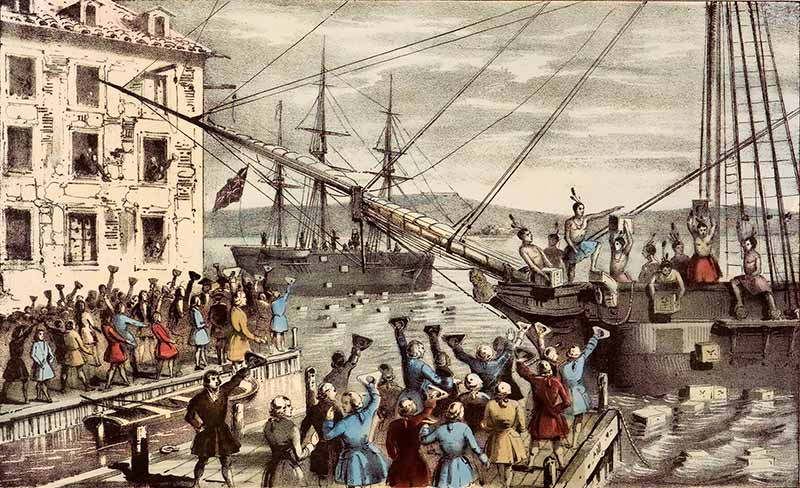
The Boston Tea Party, as depicted by Nathaniel Currier of the famed Currier & Ives
We can easily recall the acceleration of The Boston Tea party or the stirring first shots fired at Lexington, the guarding of Concord Bridge or our first and second Congresses meeting under threat of death. But it was The Boston Massacre of 1770 that showcased on the world stage the ideological mettle of some of those who would become our greatest founding fathers. In this single story we encounter many familiar names, in various roles and often at odds with each other, most of whom eventually found themselves pulling together during our revolution.
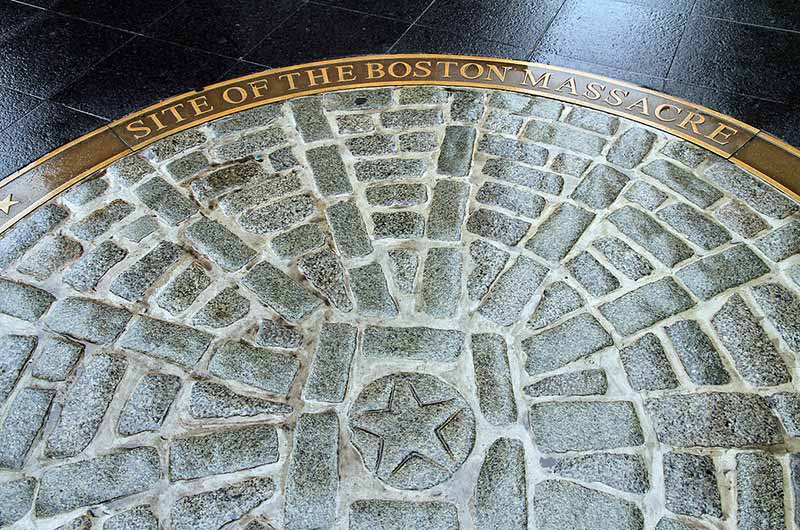
Detail of the marker shown inset below
One frigid evening in the spring of 1770, five years before America’s Declaration of Independence, a historic confrontation occurred. An angry crowd of civilians gathered outside of Boston’s Customs House, one of many such protests against the imposed taxations and sanctions of merchandise in the colonies. The recent imposition of an ever-growing presence of soldiers being stationed in Boston to enforce these measures often led to a seething discontent amongst the civilians who held their King and his Parliament in rightful suspicion. Tensions were running high between citizens themselves, and political fractioning had become substantial by the time British occupation began.
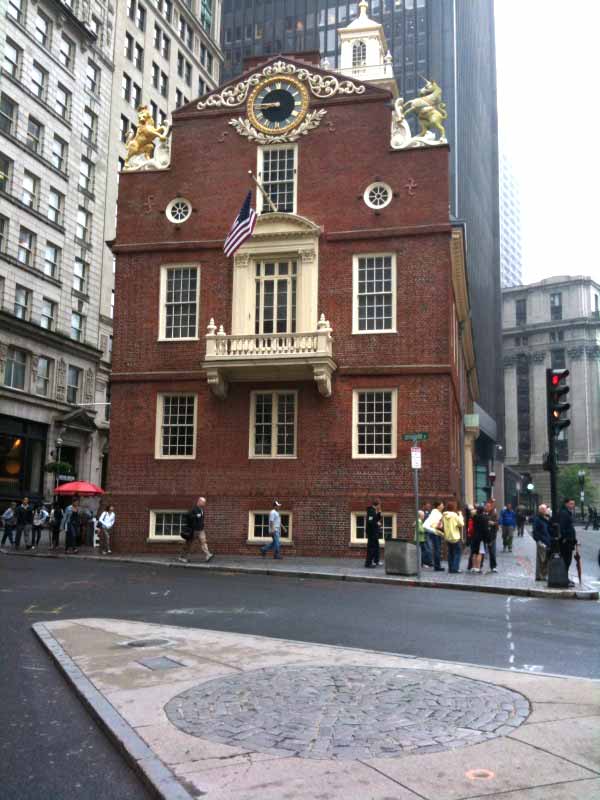
Old State House in Boston; the cobblestone circle is labeled “Site of the Boston Massacre”, however the event technically occurred nearby on what now is a busy Boston street
Samuel Adams’ organized group of freedom zealots—“The Sons of Liberty”— made great effort to intimidate those merchants and civilians not cooperating with a boycott of certain government goods. Some of these intimidations escalated to violent altercations: an apprentice boy was killed during a scuffle in February, and an army sergeant went missing on the first of March—presumed murdered.
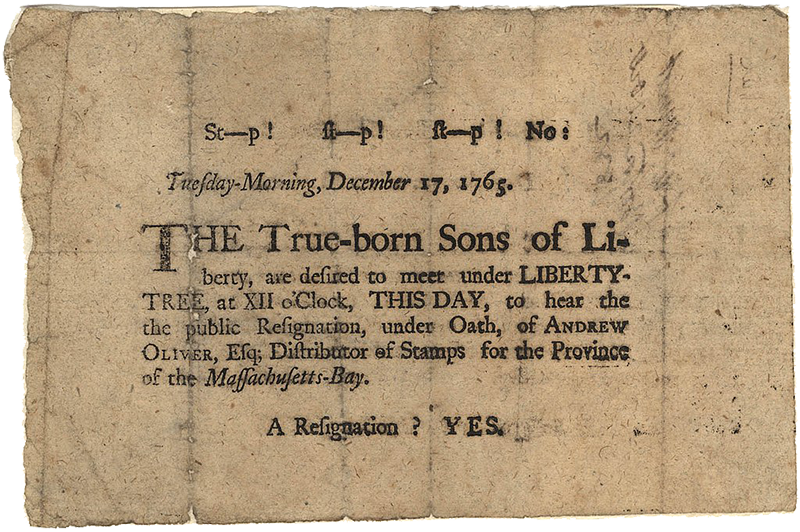
A handbill, advertising an upcoming Sons of Liberty meeting, dated December 17, 1765
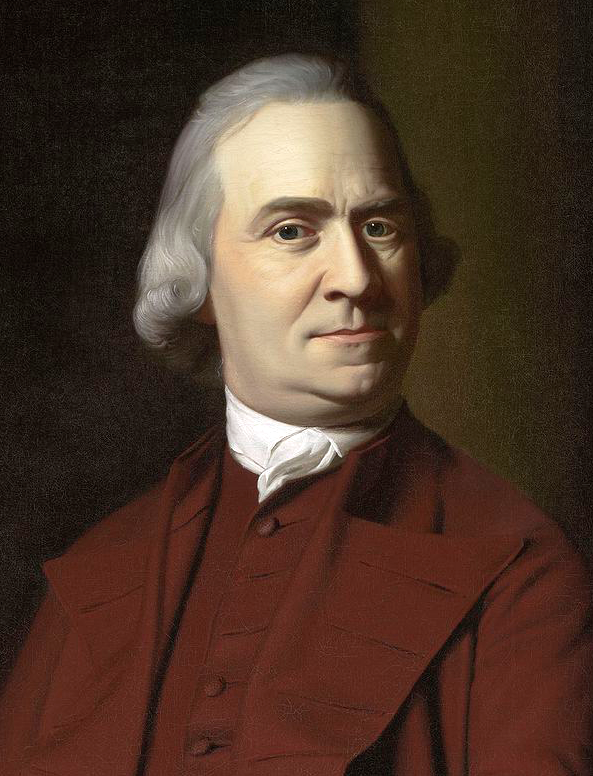
Samuel Adams (1722-1803)
With tensions high, the events of the evening of March the 5th outside the Customs House of Boston further split colonial loyalties in two. With the rioting outside growing ever more heated, and abuse being hurled on the lone sentry standing guard, British army Captain Thomas Preston called out his soldiers as reinforcements and ordered them at attention in front of the government building. Matters only escalated when the soldiers presented arms and the Bostonians began throwing ice and debris at the soldiers who eventually began firing on the civilians, killing five and wounding many. First-hand accounts of the event were chaotic, full of discrepancies, and any order to fire on the civilians was adamantly denied by Captain Preston himself. Nevertheless, the following morning Preston and all eight soldiers were arrested for murder.
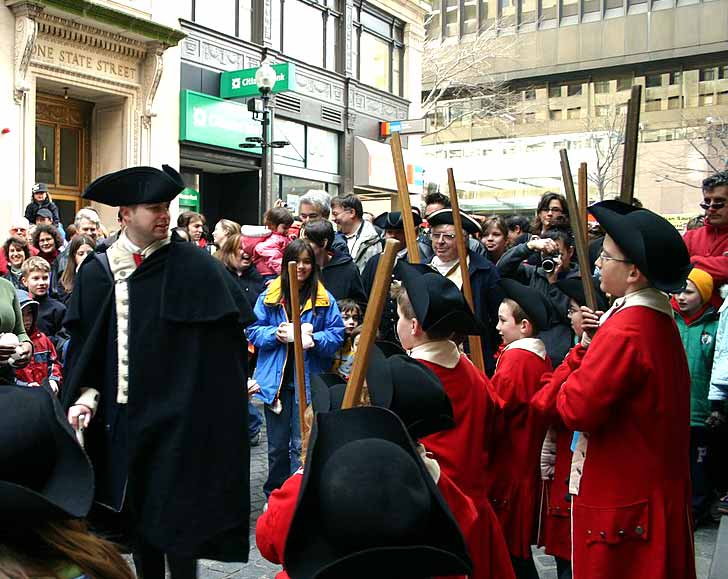
A reenactor portrays Captain Thomas Preston during a street reenactment of the Boston Massacre
The race for the hearts and loyalties of public opinion was on. When delivering his address at the funeral for “the fallen”, James Otis wore a Roman toga, evoking not only in words but in dress an ever-growing republican perspective toward the tyranny of the mother country. The later-renowned Paul Revere—a silversmith at the time—etched a powerful and exaggerated depiction of the scene, labeling it a unprovoked “massacre”. His close friend Samuel Adams rigorously distributed these etchings amongst his circles, and loudly declared the King’s soldiers to be murderers. Soon all thirteen colonies were ablaze with horror over the incident.
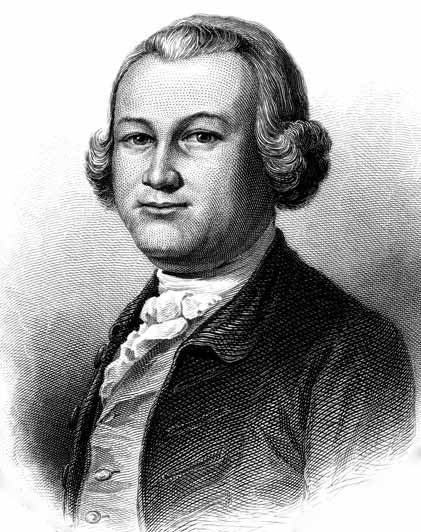
James Otis (1725-1783)
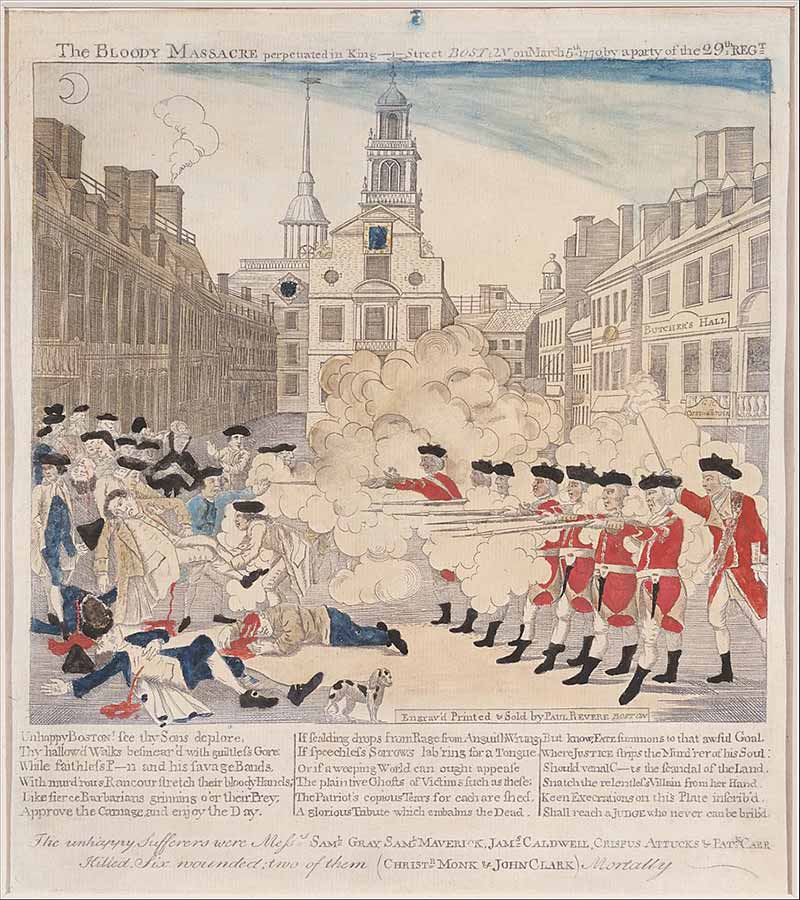
The Bloody Massacre, a 1770 engraving by Paul Revere of the Boston Massacre
Meanwhile, Samuel Adams’ cousin—a devout patriot, lawyer and native Massachusetts man, John Adams—went against public sentiment and accepted the thankless role of defense attorney for the accused soldiers, making himself “the most despised man in Boston”. Adams defended his choice by insisting that if colonial rights were not capable of being pressed and guarded under the rule of law, then the practical consequences would be anarchy and injustice.
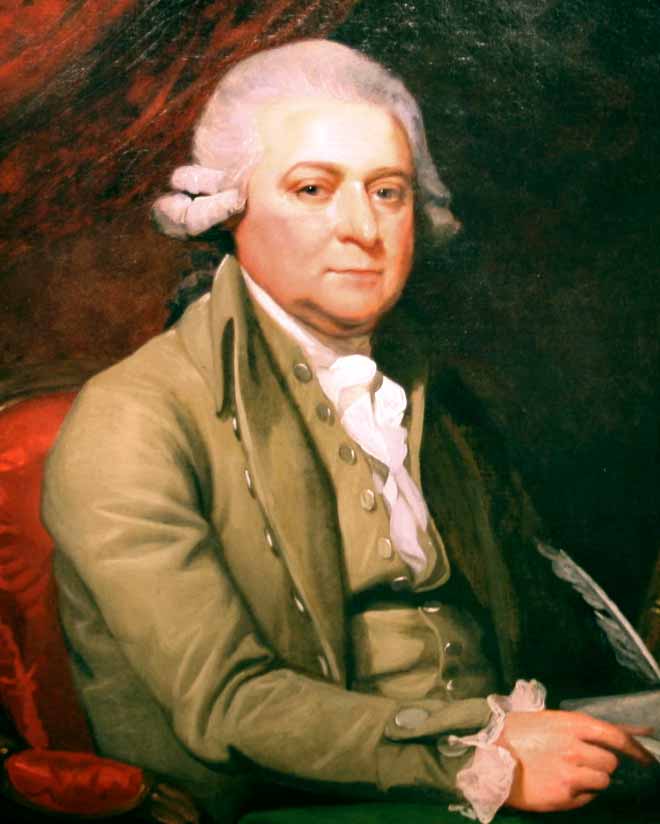
John Adams (1735-1826)
The English common law—ensuring its subjects their rights since the Magna Carta and reaffirmed with blood by Cromwell’s Parliament—was the colonists’ refuge in this national argument for representation. Adams argued they could not decry the current King’s trampling of it, and then in turn deny its provisions of a fair trial to the accused soldiers. His opponent in this trial was the Enlightenment’s protégée, Thomas Paine, writer of the esteemed pamphlet Common Sense, who catered to the emotion of his incensed audience, citing a dangerous license to justifiable measures when in the cause of personal liberties.
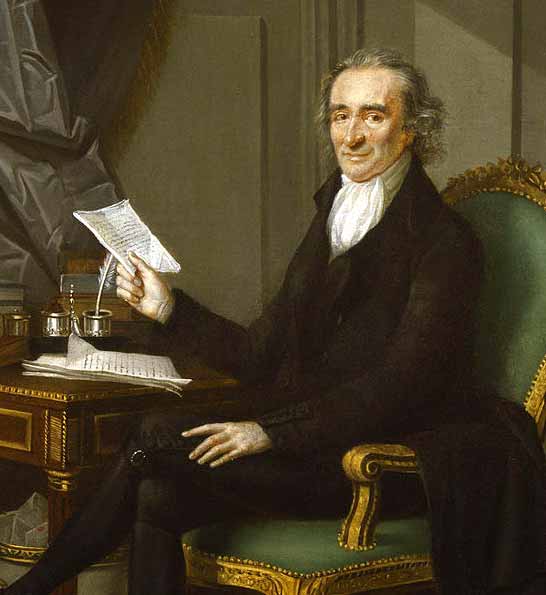
Thomas Paine (1737-1809)
But a fair trial was held at last, a jury of Massachusetts men were called, and while the statues observed may have been English, the proceedings of it became distinctly American. It would become the first time reasonable doubt was upheld in court and the first time a jury was sequestered: it was a case of many firsts.
In the end the jury found Captain Preston and six of his eight soldiers innocent of all charges, citing self-defense. The remaining two were charged with manslaughter and had their thumbs branded in punishment. While it proved to be a great personal victory for John Adams and launched him into the national spotlight, yet greater still was the ideological victory in the colonies’ long term struggle for freedom.

The gravestone, in the Granary Burying Ground, Boston, of the victims of the Boston Massacre, as well as the 12-year-old apprentice boy killed shortly before as tensions were rising
While many visionary patriots who were impatient for imminent revolt to occur grieved the case’s outcome as a setback, the integrity of the legal process had been upheld. The condemnation of mob action and the equality of the justice rendered to the accused earned their cause a reputation for the moderation and impartiality that became synonymous with American courts, derived as it was from God’s law.
I will close with John Adam’s own closing remarks to the judge and jury:
“I am for the prisoners at the bar, and shall apologize for it only in the words of the Marquis Beccaria: “If I can but be the instrument of preserving one life, his blessing and tears of transport, shall be a sufficient consolation to me, for the contempt of all mankind.” As the prisoners stand before you for their lives, it may be proper, to recollect with what temper the law requires we should proceed to this trial. The form of proceeding at their arraignment, has discovered that the spirit of the law upon such occasions, is conformable to humanity, to commonsense and feeling; that it is all benignity and candor. And the trial commences with the prayer of the Court, expressed by the Clerk, to the Supreame JUDGE of Judges, empires and worlds: ‘God send you a good deliverance’.
…I will enlarge no more on the evidence, but submit it to you. Facts are stubborn things; and whatever may be our wishes, our inclinations, or the dictates of our passions, they cannot alter the state of facts and evidence… The law, in all vicissitudes of government, fluctuations of the passions, or flights of enthusiasm, will preserve a steady undeviating course; it will not bend to the uncertain wishes, imaginations, and wanton tempers of men. To use the words of a great and worthy man, a patriot, and an hero, and enlightned friend of mankind, and a martyr to liberty; I mean Algernon Sidney, who from his earliest infancy sought a tranquil retirement under the shadow of the tree of liberty, with his tongue, his pen, and his sword, “The law, (says he,) no passion can disturb. Tis void of desire and fear, lust and anger. ‘Tis menc sine affectu; written reason; retaining some measure of the divine perfection. It does not enjoin that which pleases a weak, frail man, but without any regard to persons, commands that which is good, and punishes evil in all, whether rich, or poor, high or low—Tis deaf, inexorable, inflexible.” On the one hand it is inexorable to the cries and lamentations of the prisoners; on the other it is deaf, deaf as an adder to the clamours of the populace.”
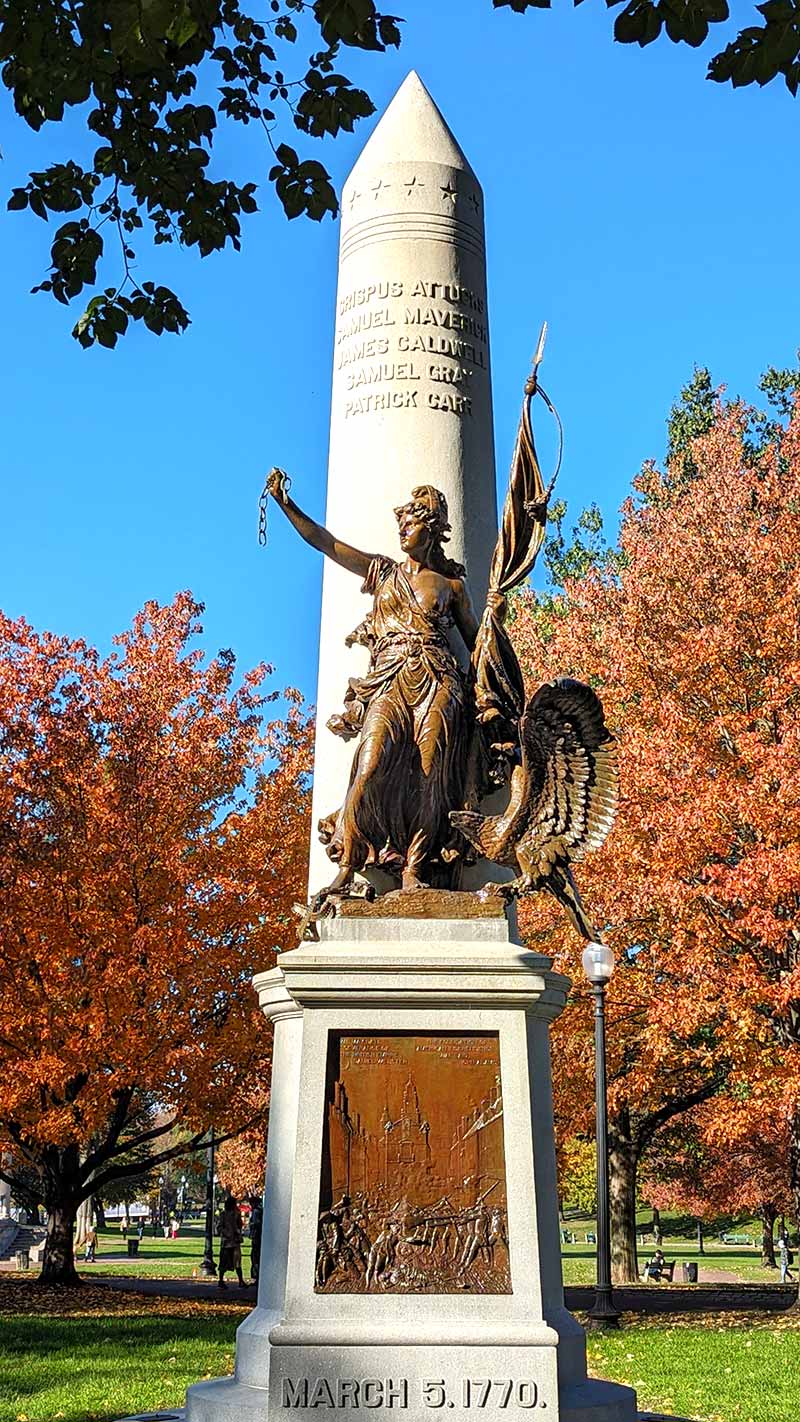
Boston Massacre Memorial
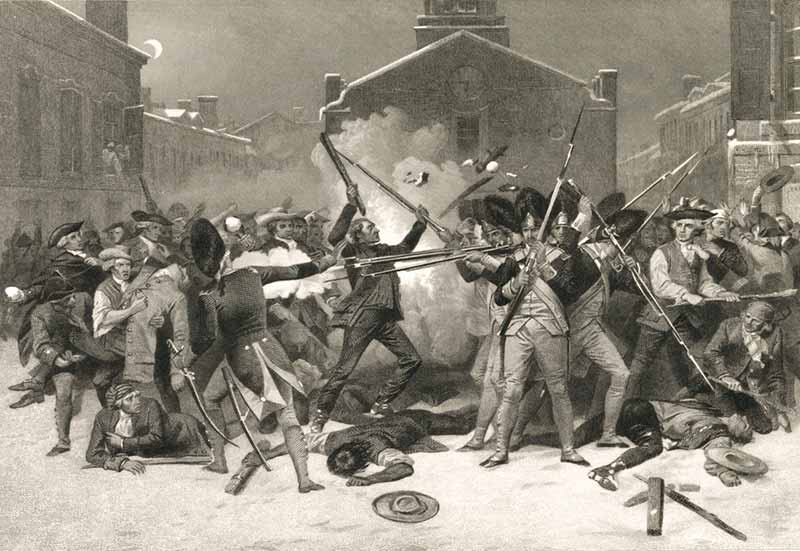
A later (1878) portrayal of the events of March 5, 1770
Image Credits: 1 Boston Tea Party (wikipedia.org) 2 Site Memorial Detail (wikipedia.org) 3 Site Memorial (wikipedia.org) 4 Sons of Liberty (wikipedia.org) 5 Sam Adams (wikipedia.org) 6 Reenactor (wikipedia.org) 7 James Otis (wikipedia.org) 8 Paul Revere’s Etching (wikipedia.org) 9 John Adams (wikipedia.org) 10 Thomas Paine (wikipedia.org) 11 Gravestone (wikipedia.org) 12 Memorial Statue (wikipedia.org) 13 1878 Sketch (wikipedia.org)


